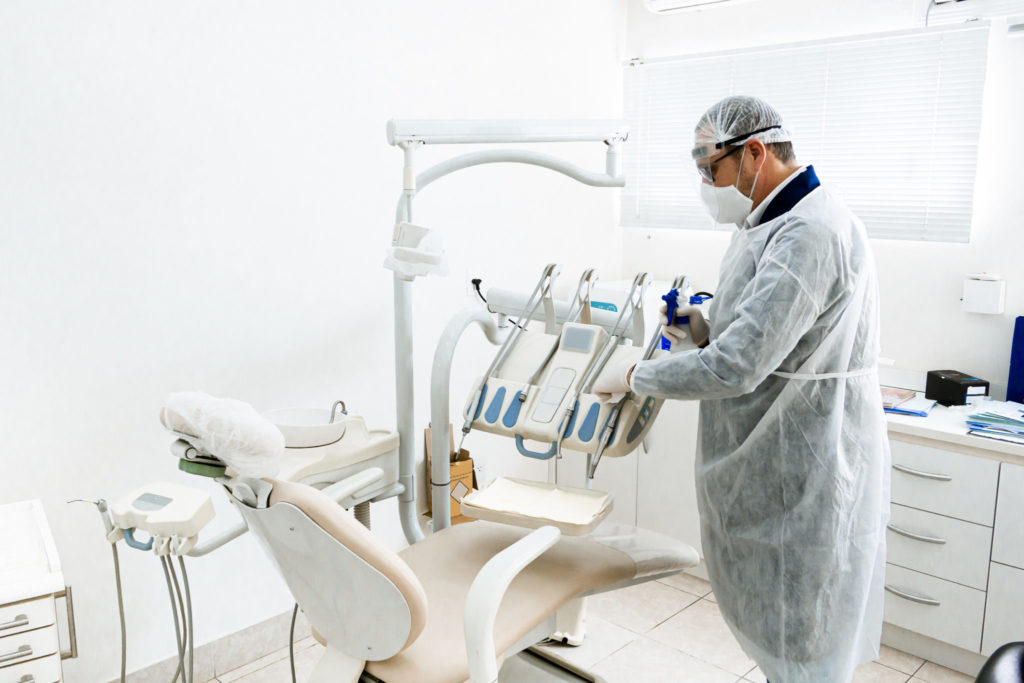Bit by bit, some tentative optimism is creeping in as we see a slow, reopening of some parts of our economy. Even the Ontario government has given dentists the green light to begin opening for non-emergency procedures.
Vigilance is still key, however. We in Ontario have seen it does not take much to have our CV19 numbers creep back up in a hurry.
Early indications from some areas in the US and Canada suggest that many dentists are busier than they expected to be on re-opening. It is nice to see that some patients missed their oral healthcare visits so much, they could not wait to return.
Unfortunately, not every patient will be so enthusiastic. I am not talking about the typical fear of the dentist we have worked with for years. Rather, I am talking about patients who will continue to suffer from higher degrees of Covid-anxiety for a while.
We know that good oral healthcare IS essential! So how do you communicate this fact to a patient who is reluctant to return to your practice due to Covid-19.
The first step is to understand their fear. Odds are, before Covid-19 arrived, most patients never heard of “aerosols” other than deodorants and household sprays. Now, they have all read numerous articles telling them about the dangers of these aerosols in your office! And they are afraid!
We know those articles neglect to reference the incredibly high level of infection control protocols most dental offices already adhere to. They don’t discuss the extent to which we invest time and money on the right equipment, supplies and training to ensure patients and teams remain safe.
However, simply jumping directly to these facts about infection control will not win nervous patients over. You will come away sounding like you just want their money and their safety is not a big concern to you. So, don’t go down that path.
Instead, step one must be learning more about their reluctance. Don’t make any assumptions…ask them what they are concerned about. Let the patient express it in their own words. No matter how many times you have heard the same story from other patients, this patient has not told you! Give them that chance!
Then validate those fears. Tell them you understand why they would feel that way…reassure them they are not alone. Tell them how “we have all had a lot to process over the past couple of months because of this pandemic”. It may sound like a cliché, and I know some people are tired of hearing this refrain…but some truly find comfort in being reminded that we are, still, all in this together.
Once you have validated their concern, the next step is key…let them know that their safety has always been your top concern. The last thing you want to do is create an impression that you were not concerned about their well-being before CV19 came along!
Instead, your script should emphasize “the safety of our patients and team members has always been our number one priority. Well before CV19 came along, we invested a lot of time and effort to make sure we adhered to the highest standards of infection control protocols. It is something we have always taken great pride in as a team. Now the new developments of this pandemic have made us up our game a bit.”
With this approach, you re-assure your patient that you have always looked out for their safety. At the same time, you acknowledge that you have had to adopt some new techniques to deal with what we have learned about a virus that is new to us. At this time, talk about your new screening procedures, measures to reduce traffic in the office, your investment in new PPE and other steps you have adopted…always with a view to look after them and their families.
As you bring your script to a conclusion, close off on a personal note. Tell them how you would never want to expose yourself and your family to any unnecessary risk. Then re-emphasize the new measures have adopted and how you and your family feel safe.
Keep in mind, nobody bats 1000 on these cases. For some patients, nothing you can say will make them come back, perhaps until there is a vaccine. But many patients just need a bit of reassurance.
So be prepared…you know this is going to happen. Work on a script with your team and practice it. Role play is key…this must be part of your back to work preparation to ensure a smooth transition as we, hopefully, continue slowly re-opening our world.
About the Author
Shawn Peers is the President of Dental Peers.


